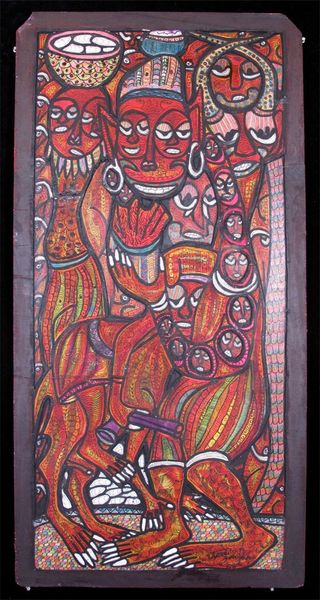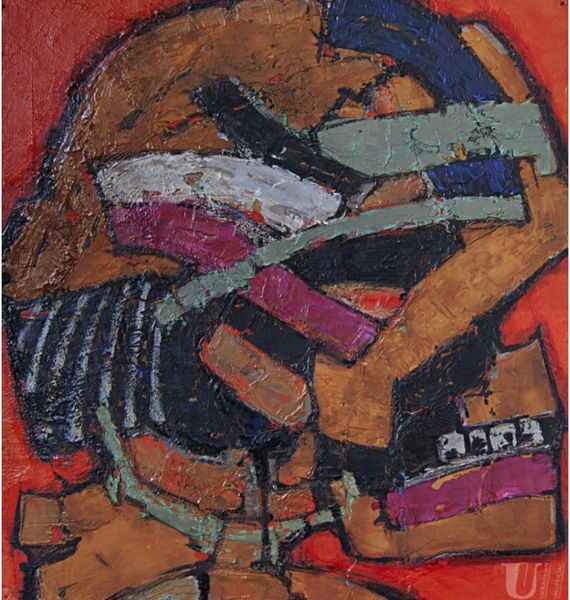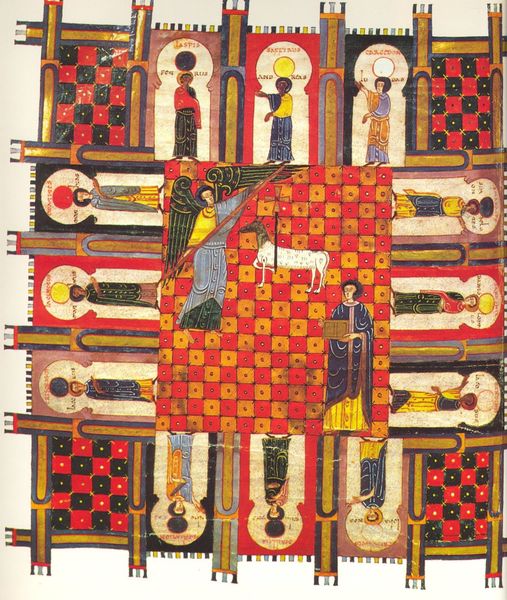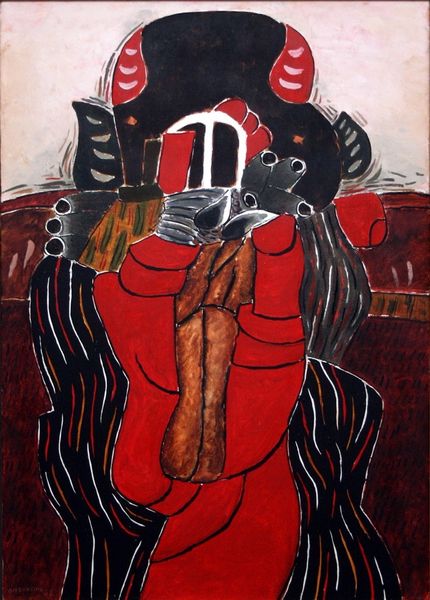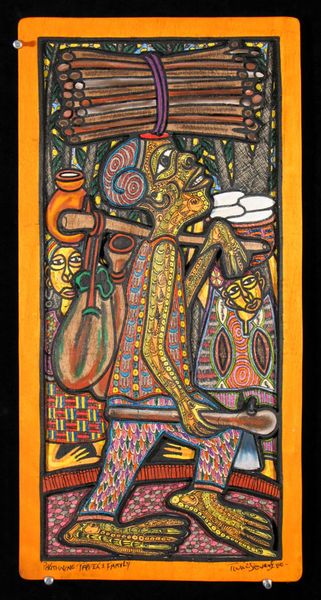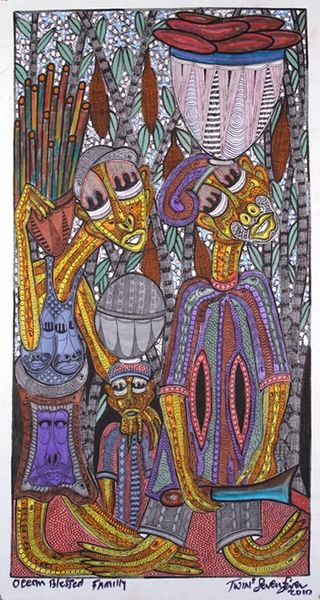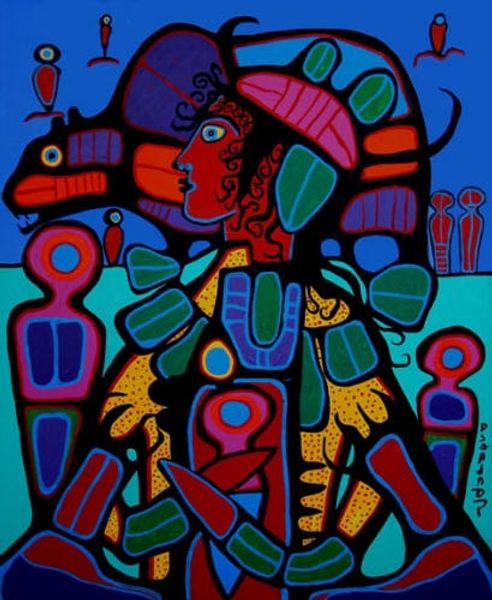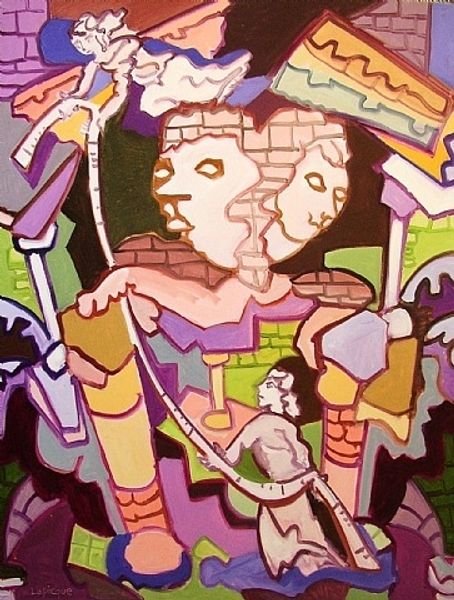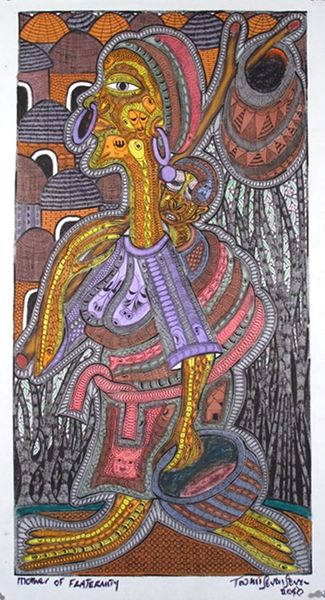
Copyright: Public domain
Editor: Here we have Ivan Milev's "Portrait of Anna Kamenova," a mixed-media piece from 1924. The bold patterns and colors, contrasted with the subject's wistful expression, give it such a unique, almost theatrical presence. What can you tell me about it? Curator: This painting provides an excellent window into the interwar period in Bulgaria. Milev was deeply engaged in a search for a uniquely Bulgarian artistic identity, drawing on folk traditions. How might the subject's attire reflect this pursuit, do you think? Editor: Well, the geometric shapes and the vibrant colors do remind me of traditional Bulgarian textiles and embroidery I’ve seen. But why combine these folk elements with a more modern, almost expressionistic, style? Curator: Exactly! Artists like Milev sought to modernize Bulgarian art while staying rooted in their cultural heritage. The stylized portraiture and symbolism were ways of asserting a national identity on the world stage, pushing back against dominant Western narratives. The museums and galleries that exhibited his works played a part in this. Do you think this artwork challenges traditional notions of portraiture? Editor: Absolutely. It feels less about capturing a likeness and more about conveying a cultural message. So it's not just a portrait of a woman, but of a nation finding its artistic voice. Curator: Precisely. The politics of imagery are always at play, especially in the context of national identity. Editor: I never thought about how art could be a statement about a country's place in the world. It adds so much more depth to the piece. Curator: Indeed. Art provides such a potent means of exploring and shaping collective identities, whether on a local or a global scale.
Comments
No comments
Be the first to comment and join the conversation on the ultimate creative platform.

